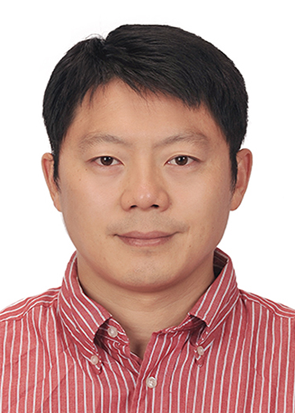Yunqi Li
Key Laboratory of High-Performance Synthetic Rubber and its Composite Materials, Changchun Institute of Applied Chemistry, Chinese Academy of Sciences, 5625 Renmin Street, Changchun, Jilin, China, 130022
Abstract: Global market for polymeric filtration membranes is over 80 billion RMBs in 2018. Polymer filtration membranes have selective permeability that can separate substance and particles in flux. They have been widely used in petrochemical, pharmaceutical, food, electronics, sewage purification, desalination, air purification, gas separation and new energy technology. The quantitative composition-process- structure-performance relationship (QCPSPR) is the core for machine learning, material genomics, and the key to the realize design for the materials used in membranes. A unique character for filtration membrane is that continuous at macro-scale, and discrete and heterogeneous at meso- and micro-scale. It poses a great challenge for successful implementation of the material genomics approach.
In recent years, focusing on i) the quantification of structures, even for those conventionally regarded as disordered systems; ii) the mechanism coupled with the formation of a structure; and iii) the QCPSPR in operation, we have studied proton exchange membranes and micro/ultra/nano-filtration membranes by the integration of small angle X-ray scattering, computer simulation, data mining and machine learning. In the study of proton exchange membranes for fuel cells, the two frontier research directions securing novel composite membranes with perfluorosulfonic acid as matrix and membranes made from hydrocarbon-based non-fluorine polymers, clear interpretation on past data that tightly associated with physicochemical process, practicable guidelines for the selection of desired fillers and the design of copolymers have been presented. Meanwhile, through the construction of classification predictive models, we provide reliable pre-evaluation for the rational design of micro/ultra/nano-filtration membranes, which can effectively cut the development cost of new membranes for water treatment.
Keywords: Polymer filtration membrane; Structure; Data mining; Machine learning; Predictive model
聚合物分离膜材料的数据挖掘和机器学习研究
李云琦
中国科学院长春应用化学研究所,长春市人民大街5625号,130022
摘要:聚合物分离膜材料具有选择性透过能力,可在相邻流体间造成不同组分的差异透过性。在石油化工、医药、食品、电子、污水净化、海水淡化、空气净化、气体分离和新能源技术中应用广泛,是实现节能减排和环境保护可持续发展的关键材料,目前全球市场规模超过八百亿人民币。组成-工艺-结构-性能的定量关系是数据挖掘和机器学习,即材料基因组学方法的核心,也是先进材料研发制备实现理性设计的关键研究内容。聚合物分离膜结构在宏观连续、介观和微观离散的特点给材料基因组学方法的成功实施带来极大挑战。近年来,围绕复杂体系结构的定量解析、结构形成机制和结构响应规律研究,我们利用小角X光散射、计算机模拟、数据挖掘和机器学习,研究了包含质子交换膜、微/超/纳滤等多种聚合物分离膜,成功建立了膜材料核心性能指标的预测模型。在燃料电池用质子交换膜研究中,围绕全氟磺酸复合膜和碳氢非氟磺酸膜两个前沿研究方向,对已有报道材料性能分布及整体物理过程参数提供了清晰解释,并为众多新结构高分子设计、组成材料选择和制膜工艺优化提供了可实践指导。在微/超/纳滤水处理膜的研究中,通过对选择性、透过性及其权衡系数分类,可为理性设计提供可靠预评估,减少新膜研发成本。
关键词:聚合物分离膜;结构;数据挖掘;机器学习;预测模型

研究员,博士生导师,获中科院“百人计划”A类支持(结题优秀)。2001年毕业于南京大学化学系,2007年在中科院长春应用化学研究所师从安立佳院士获高分子物理理学博士学位,之后赴美国罗格斯大学和堪萨斯大学学习工作至2013年回所。在高分子科学、结构生物学、生物信息学和食品科学等领域具有深入研究经历。围绕结构定量解析,阐述了高分子凝胶、高分子膜和蛋白质复合物等一系列复杂体系的基本物理问题,开发了软件/服务器促进相关领域的深入研究。在以相互作用、分子构象、微结构、聚集和相行为、宏观性质和器件性能的多个尺度相互联系为主线,拓展了基础物理理论模型在大分子复杂体系的应用,将先进材料的基础研究与前沿应用结合起来,探索出了一套行之有效的理论、模拟、实验与大数据有机结合的多学科交叉研究方法。迄今,发布了开源软件/服务器6个,在J. Mater. Chem. A, Macromolecules, J. Membr. Sci., J. Phys. Chem. B, J. Agri. Food Chem.等期刊共发表论文80余篇,他引900余次,撰写编著两章,一项美国授权专利。现任《中国化学快报》杂志青年编委,中国晶体学会小角散射专业委员,中国海水淡化与水再利用学会青年专家委员。承担国家自然科学基金5项,骨干参与973计划和科学院前沿重点研究项目各1项。
Email: yunqi@ciac.ac.cn